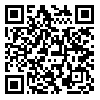Volume 7, Issue 4 (12-2022)
IJREE 2022, 7(4): 89-94 |
Back to browse issues page
The Department of English Language and Literature, Ayatollah Amoli Branch, Islamic Azad University, Amol, Iran
Abstract: (8647 Views)
The art of public speaking comes into play in many places. It is important not only in the delivery of speeches and public talks, but also in professional presentations, training events, and motivational speaking. ELT teachers, teacher trainers, lecturers and university professors, all have a reason at times to speak in front of others. A lackluster speaker can make a topic or proposal seem less than enticing, while a polished speaker can add allure to an otherwise mediocre proposition. Stephen E. Lucas’ “The Art of Public Speaking” is the leading public speaking textbook in the field. Whether a novice or an experienced speaker when beginning the course, every page-turner will learn how to be a better public speaker through Lucas’ clear explanations. Vivid examples, creative activities, annotated speech samples, and foundation of classic and contemporary rhetoric provide learners a strong understanding of public speaking. Lucas’ book which is under review in this paper reminds us that the most ordinary person can become extraordinary by developing their God-given potentials and unique gift of speech to be an inspiration and positive influence in the lives of others.
References
1. Blanchard, K., & Peale, N. V. (1989). The power of ethical management. New York: Ballantine Books.
2. Bosmajian, H. A. (1983). The language of oppression. MD: University Press of America.
3. Brownell, J. (2018). Listening: Attitudes, principles, and skills. New York: Routledge. [DOI:10.4324/9781315441764]
4. Carpenter, C., Boster, F. J., & Andrews, K. R. (2013). Functional attitude theory. The SAGE handbook of persuasion: Developments in theory and practice (104-119). Sage Publications. [DOI:10.4135/9781452218410.n7]
5. Eck, D. L. (2001). A new religious America. New York: Harper Collins Press.
6. Few, S. (2009). Now you see it: Simple visualization techniques for quantitative analysis. Oakland, CA: Analytics Press.
7. Gudykunst, W. B., & Kim, Y. Y. (2003). Communicating with strangers: An approach to intercultural communication. New York: McGraw-Hill.
8. Heyman, S. J. (2008). Free speech and human dignity. New Haven, CT: Yale University Press.
9. Jones, J. G., & Simons, H. W. (2017). Persuasion in Society. New York: Routledge. [DOI:10.4324/9781315739816]
10. Miller, G. R. (2013). On being persuaded: Some basic distinctions. In J. P. Dillard & L. Shen (Eds.), The sage handbook of persuasion: Developments in theory and practice (pp. 70-82). Thousand Oaks, CA: Sage. [DOI:10.4135/9781452218410.n5]
11. O'Keefe, D. J. (2016). Persuasion: Theory and research. CA: Thousand Oaks Press.
12. Peck, M. S. (2003). The road less traveled: A new psychology of love, traditional values, and spiritual growth. New York: Touchstone Books.
13. Ruggiero, V. R. (2015). Art of thinking, The: A guide to critical and creative thought (11th Edition). Pearson.
| Rights and permissions | |
 |
This work is licensed under a Creative Commons Attribution-NonCommercial 4.0 International License. |



